
Manufacturers often take advantage of the spotlight at the major trade shows during the winter to launch their new products, so our editors are always on the lookout for groundbreaking products at industry events, including the International Builders' Show and the International Roofing Expo. The unique, innovative, better, stronger and faster products on display receive notice in our annual Editor's Choice coverage. The following products and services were judged as this year's standouts by our editorial staff.
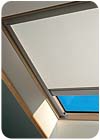
Skylights in the Velux Lightblock series offer solar-powered, remote controlled blinds that do not require installation by a professional electrician.
Solar-Powered Skylight Shades
Residential roofing contractors who seek to build a better roof and sell the extras for a more profitable package will be interested in learning more about a product that becomes available this month from skylight manufacturer Velux America Inc. (www.veluxusa.com).Some homeowners have balked at adding skylights due to their inability to "turn off the sun" and reduce or eliminate the light as you would with window shades. Some years ago, the industry responded with just that: shades for skylights. Like many innovations, this one began with a very basic concept that has been improved upon over the years.
Early versions of skylight shades were manually operated with hand cranks or pulls. These were followed by electrically operated units that were furnished with wall switches. Wireless technologies continue to improve, and the wall switches were soon replaced with remote controls. While skylight shades operated with remote controls answer the homeowners needs, installing the units and wiring them consumes a great deal of time and expense, and may involve multiple trades.
Velux has introduced solar battery-powered shades for their non-venting skylights. Contractors may now offer homeowners the option of adding a skylight with a remote-controlled shade without having to coordinate the installation with an electrician. The built-in solar cell converts direct or diffused light from the sun to electrical energy, which is stored in a battery with a capacity of approximately 500 operations without recharge.
The installation of solar battery-operated shades eliminates a good deal of hassle and expense for the contractor and the homeowner alike, and the homeowner gains the option of sunlight control. Replacing existing skylights with the solar-powered shade should be a popular option.
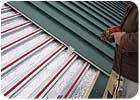
The Dawn Solar system requires no special tools to install, and its tubing is concealed beneath the roof covering.
A New Day Dawning
Last year we took note of emerging solar-panel systems from Kyocera and Sharp that were designed for application as part of an interlocking concrete tile roof. Both systems used solar panels designed to be installed, exposed, in the place of concrete tiles. These solar panels are designed to convert solar energy into electricity.This year's solar standout comes from Dawn Solar Systems of Brentwood, New Hampshire. The Dawn Solar system is designed to produce renewable energy while maintaining the architectural integrity of the building. The system incorporates flexible tubing installed in a serpentine pattern between the roof deck and the roof covering (metal, tile, or other hard steep-slope roof covering that may be installed over battens). Water - or, in colder climates, a nontoxic water and glycol mixture - is sent through the concealed tubing and is heated by the sun.
This unique concept answers the "ugly" objection to many solar collection systems. That is not, however, where the story ends. The Dawn Solar system produces hot water and air for domestic hot water, institutional, commercial and industrial process water systems; radiant floor heating systems; swimming pool heaters; and warm air heating systems. The system can be integrated with photovoltaic systems to produce electricity and is ideal for remote site or isolated cabin applications. Other benefits may include attic space cooling and deicing.
Dawn Solar's patent-pending system will probably have relatively limited application in the near term. However, as concerns over energy prices and the health of the environment continue to mount, we believe owners will seek out this kind of solution when considering their building options. Roofing contractors will do well to pay close attention as these systems emerge in the marketplace. The installation of the tubing systems and roof coverings should fit very nicely into the roofing contractor's scope of work.
To learn more about the Dawn Solar System, visit the company online at www.dawnsolar.com. To learn more about many of the emerging solar technologies, visit the Solar Energy Industries Association (SEIA) at www.seia.org.

Master Flow solar-powered booster vents from GAF bring in 500 CFM of outside air to the attic without any added utility costs.
Attic Ventilation Gets a Boost From the Sun
Another solar-powered innovation comes from GAF Materials Corp. (www.gaf.com), which showcased its new Master Flow® Solar Powered Booster™ Vents at the IRE show. Last year, the company brought out its solar-powered exhaust vents, which harness the sun's energy to exhaust 500 cubic feet per minute (CFM) of stale attic air. Homeowners are increasingly aware of the damage poorly ventilated attics can cause - roof rot, ice damming, premature deterioration of the roof system and increased heating and cooling costs - and this puts contractors in the perfect position to offer a solution. Often it is amount of intake ventilation that is the problem in houses with inadequate attic venting, and the Intake Booster was designed to remedy this situation. The intake vent moves up to 500 CFM of outside air into the attic, so it is ideal for houses with insufficient soffit ventilation.Both the intake and exhaust units are easy to install, with no extra wiring needed, and the solar power system eliminates any related utility costs for the homeowner. The solar panel is fully adjustable, and it swivels and tilts for optimal solar exposure. The solar panel was tested to withstand hail and foreign object impact, and the unit passes 110 mph wind-driven rain tests. The vents also feature brushless motors and extra-wide flashing. Both solar vents are backed by a five-year limited warranty with two-year labor plus protection.
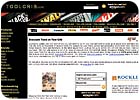
Amazon.com maintains the Tool Crib Web site, www.toolcrib.com.
Amazon Dot Tools
Roofing contractors of all stripes have at least one thing in common: They cannot work without tools. Contractors continuously tell us what a hassle dealing with tools and hardware can be. Securing them is a never-ending battle, but simply making sure the right tools (in working order, of course) with the right blades and bits make it to the job can take big-time planning.The first thing you have to do is shop for and purchase the tools you need. For many roofing contractors, this is an activity that goes on every day as a routine part of doing business. While the concept of Internet trade is not new, Amazon.com has quietly built a virtual warehouse filled with 800,000 items in its "Tools and Hardware" division, www.amazon.com/tools. And you thought they had a lot of books.
Amazon acquired catalog supplier Tool Crib in 1999 and continues to publish the print version of the Tool Crib catalog and maintain the Tool Crib Web site, www.toolcrib.com. Amazon ships products from 11 distribution centers located to facilitate product availability and prompt delivery.
OK, so what is the big advantage for acquiring tools and hardware via this online source versus the typical local sources? To source tools online does require planning ahead. If you need something right now, then the local supply house is a better solution than shutting down the job - no matter what the cost.
There is, however, something to be said for advance planning. Planning purchases of tools and hardware causes you to consider all your options, and gives you the time it takes to research the best solution and shop for the best prices. Those are the two moneymaking secrets of using the unique services of Amazon.com tools and hardware.
Amazon offers some unique services to "regular customers," such as deals on freight charges. You do not have to be a regular to go online and shop for the best deal on the everyday tool necessities a roofing contractor will encounter. Items - for instance, circular saws - are displayed from virtually every major manufacturer. Full details and specifications can be used to compare one make against another, and the site even offers comparisons of prices for the different models. Many tools feature reviews from other users, frequently contractors.
Again, the concept of Internet shopping is not new. The experience is improving along with many contractors' ability to comfortably operate a personal computer. Several Roofing Contractor surveys tell us that PC usage among our contractor readers continues to grow year after year. Online research and shopping for the tools required for the trade is one great use of the technology, and that is why Amazon tools and hardware is one of our editors' choices.
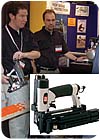
Steve Duncan (left) demonstrates just how easy it is to load the GRC58 Grip-Rite cap stapler at the International Roofing Expo in Las Vegas.
A Big Hand for Two Hand Tools
Tools can make a contractor's head swivel at a trade show, and several had our editors doing double takes. Sometimes someone simply makes a better mousetrap - develops an innovation that makes a product easier to use or more efficient. Sometimes the key ingredient is simply speed. One item that definitely caught our eyes was the GRC58 Grip-Rite Cap Stapler (www.grip-rite.com) from Primesource. At just 4.1 pounds, it is definitely among the lightest in the category, and it has a smaller footprint than other pneumatic cap staplers, but it feels solid and well balanced. But what sets it apart from the competition is the ease and speed with which it can be reloaded. The caps are packed in a strip, not a roll, so they can be inserted in seconds; you simply disconnect the tool from the air supply by disengaging the quick-connect coupling, hang the tool on the belt hook, open the loading tower, and drop in a complete strip of caps. Then you pull out the plastic string and click shut the tower door. The staples are easy to load as well, without ever to put down the tool - often a risky proposition on a rooftop, ladder or scaffold. The magazine holds 110 caps and 110 staples, and the caps and staplers come packaged together in a 2,200-count box (2,200 caps and 2,200 staples).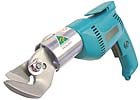
The Excalibur sheet metal cutter is new in the United States, but it has been used extensively by roofing contractors in Australia.
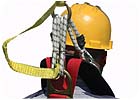
The Dennington Safety harness keeps fallen workers in an upright position and reduces the terminal impact forces of an arrested fall with specially designed bungee shock absorbers.
Saving Lives, One Innovation at a Time
One area with no shortage of innovations was the category of safety devices. Among the most innovative is the Dennington Safety Harness (www.denningtonsafetygear.com), which features a totally new arresting technology to reduce the terminal impact forces of an arrested fall to almost 620 pounds. The harness achieves this reduction in force through the absorption of downward inertia by the bungee shock absorbers. This is not a one-size-fits-all system; each shock absorber is calibrated for the individual user. The system ensures a shorter fall distance while still complying with OSHA and ANSI standards, and the harness' three-point balancing system keeps the worker in a vertical position in both fall and retrieval situations; this action alone could potentially prevent thousands of serious injuries and deaths each year.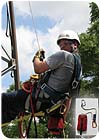
Tech Safety Lines' SRK-11 Self-Rescue Kit comes in a small fanny pack, which carries up to 150 feet of Vectran line and a military Capewell emergency descender.
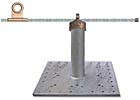
The Beam Runner anchoring device clamps easily with one hand onto any angle iron or beam flange capable of supporting 5,000 pounds of impact per attached worker.
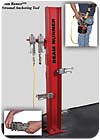
Guardian's CB Pass-Thru System is a removable horizontal lifeline attachment designed to provide attachment for up to 4 workers in fall restraint and for one worker in fall arrest. Its pass-through top allows for cable lifeline or direct attachment.

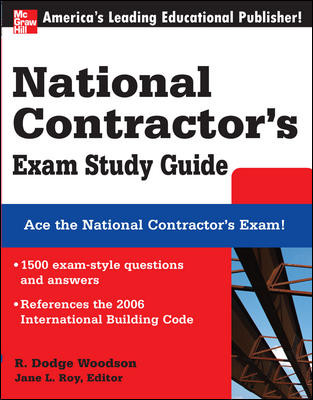
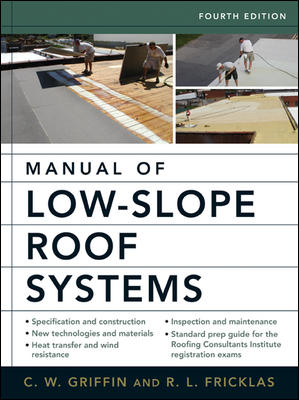
Report Abusive Comment